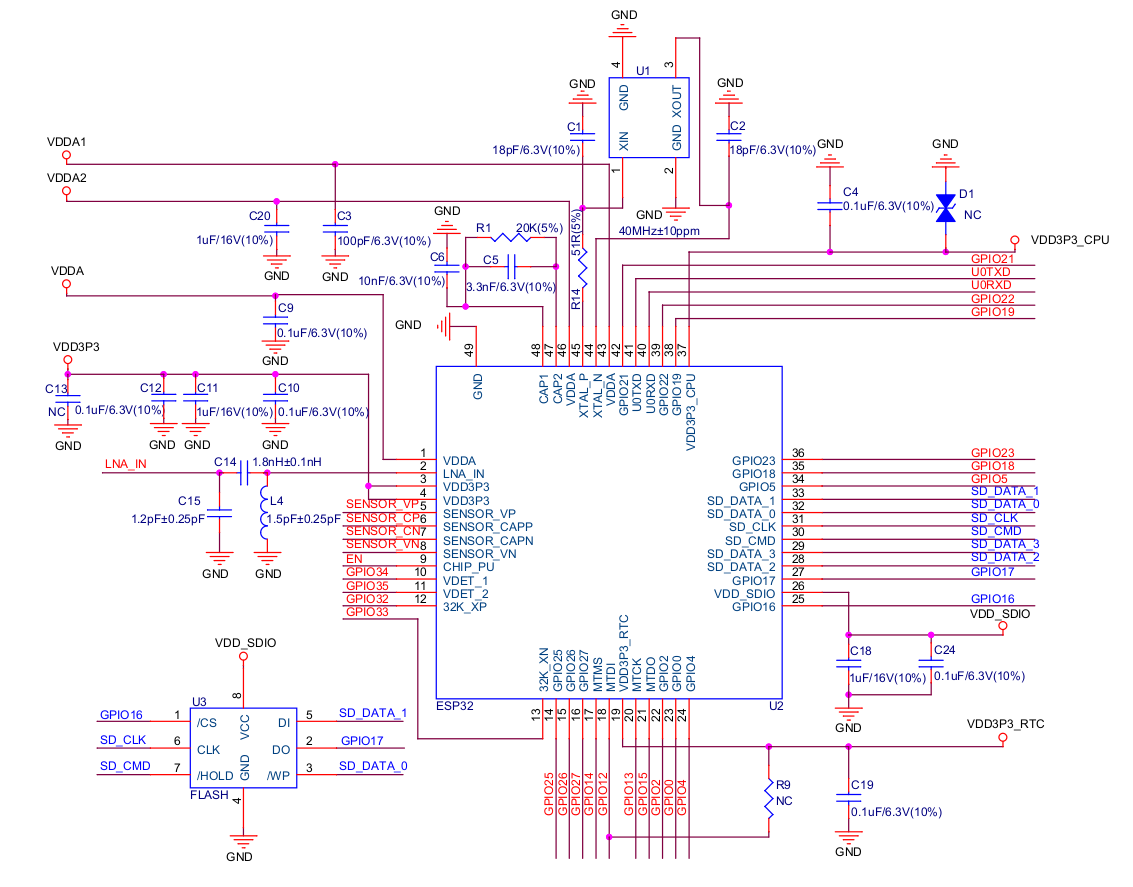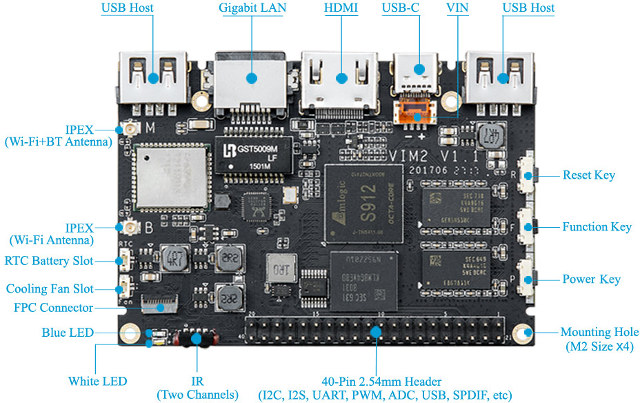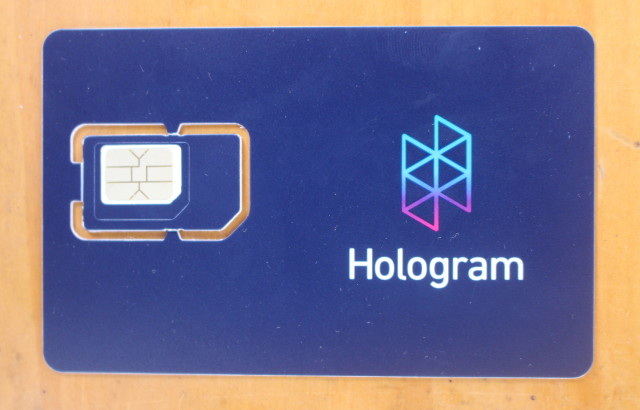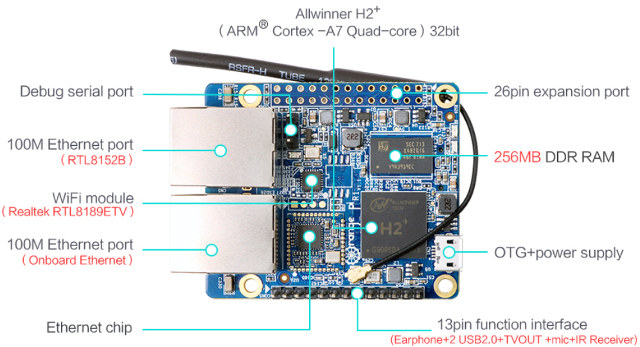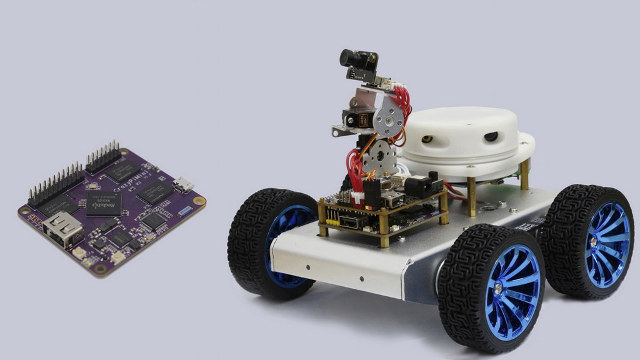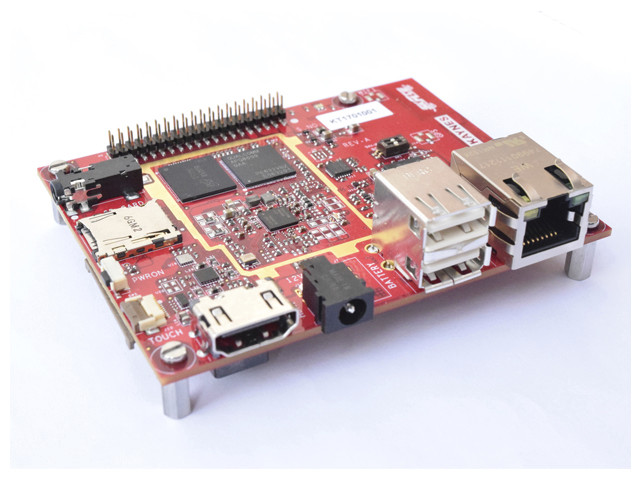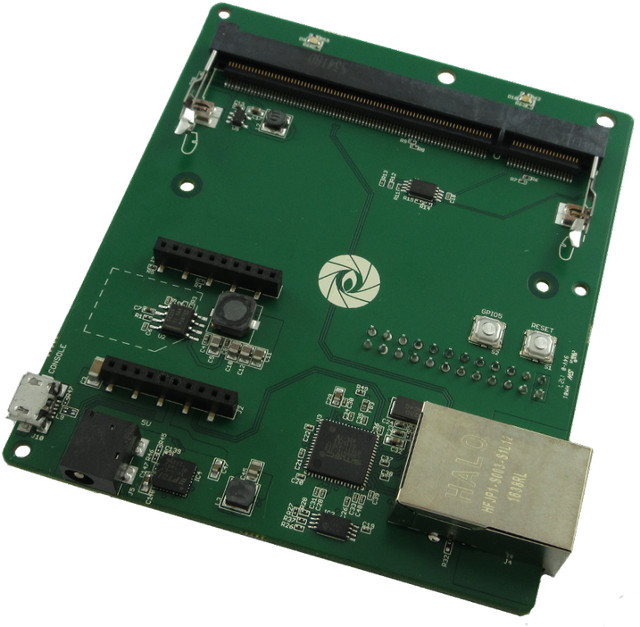The Embedded Linux Conference & IoT summit 2017 took place in the US earlier this year in February, but there will soon be a similar event with the Embedded Linux Conference *& Open Source Summit Europe 2017 to take up in Europe on October 23 – 25 in Prague, Czech Republic, and the Linux Foundation has just published the schedule. It’s always useful to find out what is being discussed during such events, even if you are not going to attend, so I went through the different sessions, and compose my own virtual schedule with some of the ones I find the most interesting. Monday, October 23 11:15 – 11:55 – An Introduction to SPI-NOR Subsystem – Vignesh Raghavendra, Texas Instruments India Modern day embedded systems have dedicated SPI controllers to support NOR flashes. They have many hardware level features to increase the ease and efficiency of accessing SPI NOR […]
ESP32-PICO-D4 System-in-Package Combines ESP32, 4MB SPI Flash, a Crystal Oscillator, and Passive Components
Espressif Systems has revealed another ESP32 variant, but this time it’s not an SoC, but a 7x7mm system-in-package (SIP) that comes ESP32 dual core processor, a 4MB SPI flash, a crystal oscillator and various passive components, so that you don’t need to include those in your design, and create an ultra-compact PCB for wearables and other space-constrained applications. ESP32-PICO-D4 SiP specifications: SoC – ESP32 with two Tensilica LX6 cores, 448 KB ROM, 520 KB SRAM (inc. 8KB RTC memory), 1kbit eFuse On-module Flash – 4MB SPI flash Connectivity WiFi – 802.11 b/g/n/e/i (802.11n up to 150 Mbps) Bluetooth – Bluetooth V4.2 BR/EDR and BLE specification; ; class-1, class-2 and class-3 transmitter; Audio: CVSD and SBC SIP Interfaces SD card, UART, SPI, SDIO, LED PWM, Motor PWM, I2S, I2C, IR GPIO, capacitive touch sensor, ADC, DAC, LNA pre-amplifier Sensors – On-chip Hall sensor & temperature sensor Clock – On-module 40 MHz crystal […]
Khadas VIM2 Amlogic S912 Development Board Sells for $75 and Up
Khadas VIM2 is the only low cost development board powered by Amlogic S912 octa-core processor that I know of, but when we first wrote about the board it was not available yet. The three versions of the boards are now being sold on GearBest with the Basic version going for $74.99, the Pro version for $94.99, and the Max version for $109.99. [Update: You can get VIM2 Max for $99.99 by using GBVIM2MAX coupon code for the first 100 boards daily, and the five first boards are sold for $49.99 daily at 9:00 UTC until August 28th. Details on promotion page.] Khadas VIM2 Basic/Pro/Max specifications: SoC – Amlogic S912 octa core ARM Cortex-A53 @ up to 1.5 GHz with ARM Mali-820MP GPU System Memory Basic – 2 GB DDR4 Pro/Max – 3 GB DDR4 Storage micro SD card and 2MB SPI flash eMMC Flash – Basic: 16GB; Pro: 32GB; Max: […]
Checking out Hologram’s Developer SIM Card for Worldwide IoT Projects
Hologram is a service that offers 2G/3G/4G cellular connectivity for the Internet of Things via a SIM card that works in over 170 countries, and with pricing starting at $0.40 per month. In order to promote their services, the company offers a free developer SIM card which I ordered when I first wrote about the service last month. I was pleased and surprised they would sent it to Asia for free, and I got the card in a bubble envelop. The back of the card includes a 18 to 22 digit SIM card number and bar code, that we’ll need to use for activation, and a link that redirects to https://hologram.io/docs/. I planned to try the card with Wio GPS tracker board which requires a nano SIM card, and there are convenient cutouts to convert the SIM card to micro SIM or nano SIM card formats. Before using the card […]
$14 Orange Pi R1 Allwinner H2+ Board Comes with Two Ethernet Ports, 256 MB RAM
Shenzhen Xunlong has introduced the new Orange Pi R1 board with Allwinner H2+ quad core Cortex A7 processor that’s a bit different from their other models, as it includes two 10/100M Ethernet port, and should be suitable for intelligent controllers, or simple IoT gateways. Orange Pi R1 board specifications: SoC – Allwinner H2(+) quad core Cortex A7 processor @ 1.2 GHz with Mali-400MP2 GPU System Memory – 256 DDR RAM Storage – micro SD card slot, 16 MB SPI flash Connectivity – 2x 10/100M Ethernet (including on via RTL8152B USB to Ethernet) + 802.11 b/g/n WiFi (Realtek RTL8189ETV) with u.FL antenna connector and external antenna USB – 1x micro USB OTG port Expansion headers Unpopulated 26-pin “Raspberry Pi B+” header 13-pin header with headphone, 2x USB 2.0, TV out, microphone and IR receiver signals Debugging – 3-pin header for serial console Power Supply – 5V via micro USB port Dimensions […]
CrazyPi Board Runs Ubuntu and ROS on Rockchip RK3128 SoC for Robotics & IoT Projects (Crowdfunding)
CrazyPi is a maker board powered by Rockchip RK3128 quad core Cortex A7 processor that can take various magnetically connected modules such as LIDAR, gimbal, 4G LTE, etc.., and runs both Ubuntu and ROS (Robot Operating System) for DIY robotics & IoT projects. CrazyPi main board specifications: SoC – Rockchip RK3128 quad core Cortex A7 processor @ 1.2 GHz with ARM Mali GPU MCU – ARM Cortex-M3 @ 72 MHz System Memory – 1GB DDR3L @ 1066 MHz Storage – 16GB eMMC flash pre-loaded with Ubuntu and ROS Connectivity – 802.11 a/b/g/n WiFi @ 150 Mbps, Bluetooth 4.0 USB – 1x USB 2.0 host port Expansion Headers – Two headers with a total of 36-pin exposing 1x HDMI, 1x speaker, 1x microphone, 3x PWM, 1x I2C, 1x UART, 1x SPDIF, 1x SPI, 1x USB Power Supply – 5V via micro USB port ? Dimensions – Smaller than credit card The […]
SKATE-212 Snapdragon 212 Development Kit with 7″ Display is now available for $349
Last month, I wrote about two boards based on Snapdragon 212 processor that can be used for smart speakers, IoT applications, industrial automation, etc..: Intrinsyc Open-Q 212 SBC selling for $595 without LCD, and Kaynes Technology SKATE-212. We did not have that much information about the latter at the time, but the company has now published some photos, more details, and revealed pricing. SKATE-212 single board computer specifications: SoC – Qualcomm Snapdragon 212 quad core Cortex A7 @up to 1.3GHz with Adreno 304 GPU supporting OpenGL ES 3.0, OpenCL, DirectX System Memory – 1 GB LPDDR3 (Expandable upto 2GB) Storage – 8 GB eMMC flash (Expandable up to 16GB) + micro SD slot Video Output / Display – 7″ capacitive touchscreen, full size HDMI port (Only one or the other can be used at a given time) Connectivity – 10/100M Ethernet, 802.11 b/g/n WiFi + Bluetooth 4.x LE, GPS with […]
Gumstix Pi Conduit Gateway Board Leverages Raspberry Pi Compute Module, Off-the-Shelf LoRa and Cellular Modules
Gumstix has designed Pi Conduit Gateway baseboard for both the Raspberry Pi Compute Module and RisingRF RHF0M301 LoRa gateway module, in order to create a Linux based LoRa gateway that can optionally support LTE or other cellular connectivity via NimbeLink Skywire cellular modem. Conduit Pi LoRa Gateway board specifications: 200-pin SO-DIMM connector for Raspberry Pi Compute Module / Raspberry Pi 3 Compute Module (CM3 / CM3L) Headers for RisingRF RHF0M301 LoRa Module NimbeLink Skywire 2G/3G/4G cellular modem connector Low profile 10/100M Ethernet jack (implemented via USB 2.0) USB – 1x micro USB port for debugging via an FTDI USB to TTL chip Misc – User (GPIO5) and reset buttons Power Supply – 5V via power barrel The board was designed using Geppetto, which means you should be able to customize it to your needs by modifying it the original design in a web browser, and order your brand new custom […]



